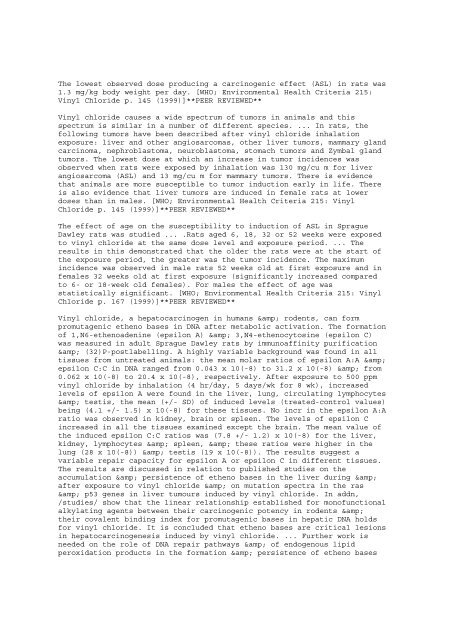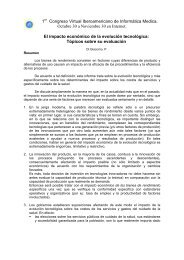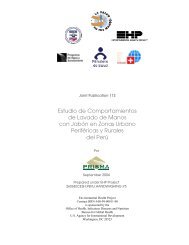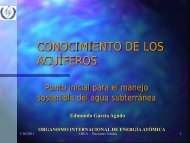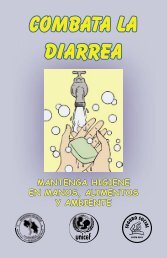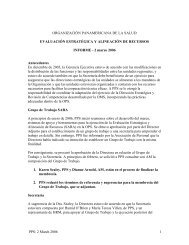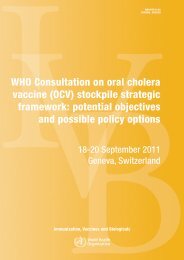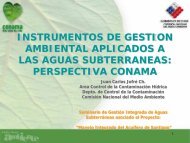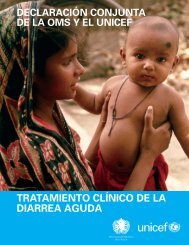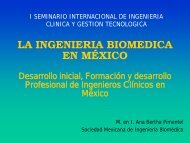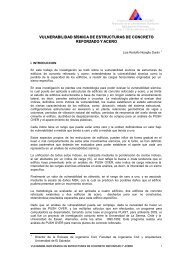a database of the National Library of M
a database of the National Library of M
a database of the National Library of M
Create successful ePaper yourself
Turn your PDF publications into a flip-book with our unique Google optimized e-Paper software.
The lowest observed dose producing a carcinogenic effect (ASL) in rats was1.3 mg/kg body weight per day. [WHO; Environmental Health Criteria 215:Vinyl Chloride p. 145 (1999)]**PEER REVIEWED**Vinyl chloride causes a wide spectrum <strong>of</strong> tumors in animals and thisspectrum is similar in a number <strong>of</strong> different species. ... In rats, <strong>the</strong>following tumors have been described after vinyl chloride inhalationexposure: liver and o<strong>the</strong>r angiosarcomas, o<strong>the</strong>r liver tumors, mammary glandcarcinoma, nephroblastoma, neuroblastoma, stomach tumors and Zymbal glandtumors. The lowest dose at which an increase in tumor incidences wasobserved when rats were exposed by inhalation was 130 mg/cu m for liverangiosarcoma (ASL) and 13 mg/cu m for mammary tumors. There is evidencethat animals are more susceptible to tumor induction early in life. Thereis also evidence that liver tumors are induced in female rats at lowerdoses than in males. [WHO; Environmental Health Criteria 215: VinylChloride p. 145 (1999)]**PEER REVIEWED**The effect <strong>of</strong> age on <strong>the</strong> susceptibility to induction <strong>of</strong> ASL in SpragueDawley rats was studied ... .Rats aged 6, 18, 32 or 52 weeks were exposedto vinyl chloride at <strong>the</strong> same dose level and exposure period. ... Theresults in this demonstrated that <strong>the</strong> older <strong>the</strong> rats were at <strong>the</strong> start <strong>of</strong><strong>the</strong> exposure period, <strong>the</strong> greater was <strong>the</strong> tumor incidence. The maximumincidence was observed in male rats 52 weeks old at first exposure and infemales 32 weeks old at first exposure (significantly increased comparedto 6- or 18-week old females). For males <strong>the</strong> effect <strong>of</strong> age wasstatistically significant. [WHO; Environmental Health Criteria 215: VinylChloride p. 167 (1999)]**PEER REVIEWED**Vinyl chloride, a hepatocarcinogen in humans & rodents, can formpromutagenic e<strong>the</strong>no bases in DNA after metabolic activation. The formation<strong>of</strong> 1,N6-e<strong>the</strong>noadenine (epsilon A) & 3,N4-e<strong>the</strong>nocytosine (epsilon C)was measured in adult Sprague Dawley rats by immunoaffinity purification& (32)P-postlabelling. A highly variable background was found in alltissues from untreated animals: <strong>the</strong> mean molar ratios <strong>of</strong> epsilon A:A &epsilon C:C in DNA ranged from 0.043 x 10(-8) to 31.2 x 10(-8) & from0.062 x 10(-8) to 20.4 x 10(-8), respectively. After exposure to 500 ppmvinyl chloride by inhalation (4 hr/day, 5 days/wk for 8 wk), increasedlevels <strong>of</strong> epsilon A were found in <strong>the</strong> liver, lung, circulating lymphocytes& testis, <strong>the</strong> mean (+/- SD) <strong>of</strong> induced levels (treated-control values)being (4.1 +/- 1.5) x 10(-8) for <strong>the</strong>se tissues. No incr in <strong>the</strong> epsilon A:Aratio was observed in kidney, brain or spleen. The levels <strong>of</strong> epsilon Cincreased in all <strong>the</strong> tissues examined except <strong>the</strong> brain. The mean value <strong>of</strong><strong>the</strong> induced epsilon C:C ratios was (7.8 +/- 1.2) x 10(-8) for <strong>the</strong> liver,kidney, lymphocytes & spleen, & <strong>the</strong>se ratios were higher in <strong>the</strong>lung (28 x 10(-8)) & testis (19 x 10(-8)). The results suggest avariable repair capacity for epsilon A or epsilon C in different tissues.The results are discussed in relation to published studies on <strong>the</strong>accumulation & persistence <strong>of</strong> e<strong>the</strong>no bases in <strong>the</strong> liver during &after exposure to vinyl chloride & on mutation spectra in <strong>the</strong> ras& p53 genes in liver tumours induced by vinyl chloride. In addn,/studies/ show that <strong>the</strong> linear relationship established for mon<strong>of</strong>unctionalalkylating agents between <strong>the</strong>ir carcinogenic potency in rodents &<strong>the</strong>ir covalent binding index for promutagenic bases in hepatic DNA holdsfor vinyl chloride. It is concluded that e<strong>the</strong>no bases are critical lesionsin hepatocarcinogenesis induced by vinyl chloride. ... Fur<strong>the</strong>r work isneeded on <strong>the</strong> role <strong>of</strong> DNA repair pathways & <strong>of</strong> endogenous lipidperoxidation products in <strong>the</strong> formation & persistence <strong>of</strong> e<strong>the</strong>no bases


